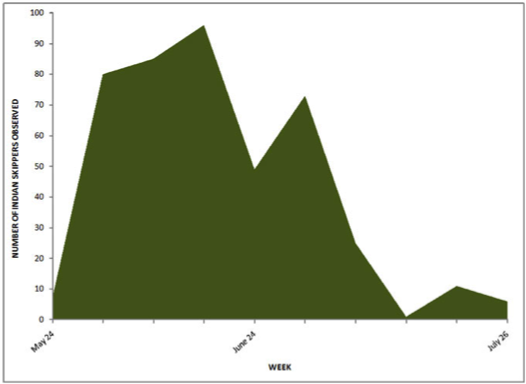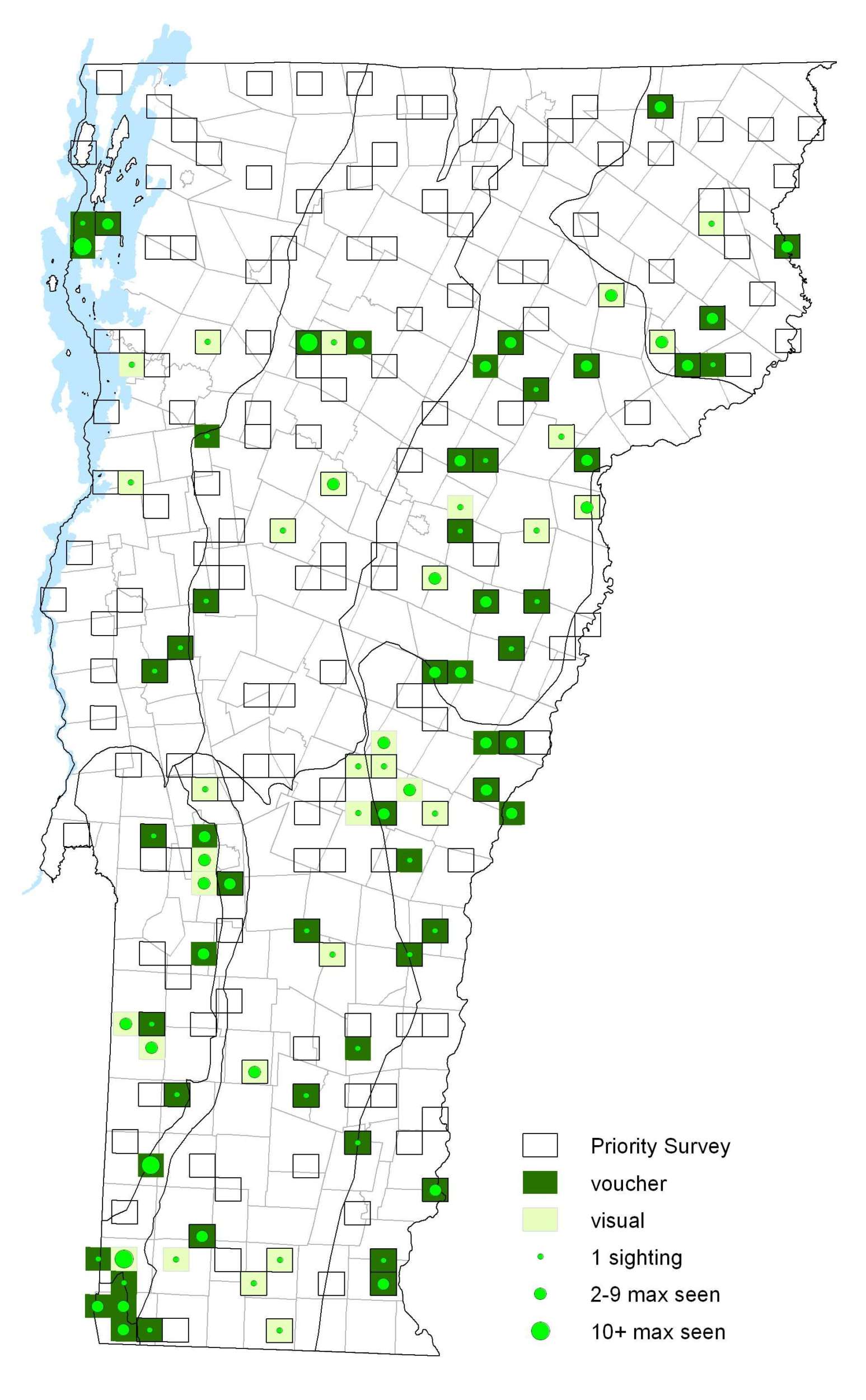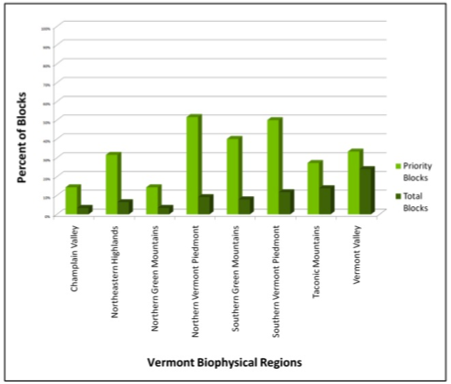|
Resident Conservation Status North American Range |
Easy to confuse with the Long Dash, this medium sized Hesperid is common in the Northeast, yet little has been reported on its natural history. Look for the chevron pattern on the ventral hindwing for field identification, though this is not always clearly defined, especially in males. The Indian Skipper is a medium generalist, capable of utilizing a wide array of common habitats and hostplants. They are fast fliers and startle easily when approached. Males perch all day to await receptive females. Caterpillars live in silken tubes at the base of grass clumps and leave them to feed. Older caterpillars overwinter and pupate in the spring.
Identification
Upperside is yellow-orange with well-defined black markings. Black border of the hindwing is often toothed. Underside of hindwing is yellow-orange with a band of yellow spots that barely contrasts with the background.
Flight
The Indian Skipper had one brood from the end of May through the end of July. They were most abundant near mid-June. Extreme dates: 24 May 2004 in Pownal (K. Hemeon) and 27 July 2007 in Hardwick (J. Schneider).
Distribution and Habitat
Found throughout most of Vermont with the exception of the northern most portion of the state where it was absent or very rare. Their favored habitats are old fields and grasslands. Caterpillar hosts are various grasses including Little Bluestem (Andropogon scoparius), and panic grasses (Panicum). Adults nectar from flowers such as blackberry (Rubus), phlox (Phlox), and bugloss (Echium).







